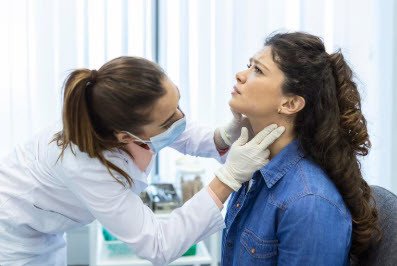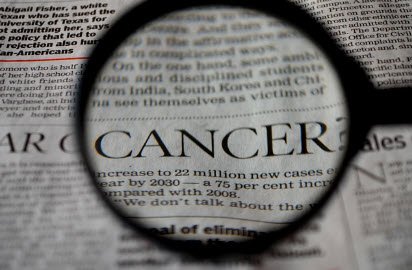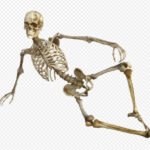Understanding Non-Hodgkin Lymphoma (NHL)
Non-Hodgkin lymphoma is a group of blood cancers that develop in the lymphatic system, originating in white blood cells called lymphocytes. With over 80 subtypes, NHL ranges from slow-growing to highly aggressive forms.
Common Symptoms
- Swollen lymph nodes: Painless swelling in neck, armpits, or groin
- Fever: Persistent low-grade fevers
- Night sweats: Drenching sweats requiring clothing changes
- Unexplained weight loss: Losing >10% body weight in 6 months
- Fatigue: Persistent tiredness not relieved by rest
- Abdominal pain/swelling: From enlarged spleen or liver
- Chest symptoms: Coughing, difficulty breathing if mediastinal nodes affected
Main Types of NHL
B-Cell (85% of cases)
- Diffuse large B-cell lymphoma (DLBCL): Most common aggressive form
- Follicular lymphoma: Slow-growing but hard to cure
- Mantle cell lymphoma: Rare and aggressive
- Burkitt lymphoma: Fast-growing but potentially curable
T-Cell (15% of cases)
- Peripheral T-cell : Diverse group of aggressive lymphomas
- Cutaneous T-cell : Primarily affects the skin
- Anaplastic large cell : Can be systemic or skin-limited
Risk Factors
- Weakened immune system (HIV, organ transplant medications)
- Certain infections (EBV, H. pylori, hepatitis C)
- Autoimmune diseases
- Exposure to certain chemicals (pesticides, herbicides)
- Previous cancer treatments (radiation/chemotherapy)
- Age (risk increases with age, though some types affect children)
Diagnostic Process
- Physical exam (lymph node assessment)
- Blood tests (CBC, LDH, liver/kidney function)
- Lymph node biopsy (excisional preferred)
- Bone marrow biopsy
- Imaging tests (CT, PET, MRI scans)
- Lumbar puncture (if CNS involvement suspected)
Staging System (Lugano Classification)
- Stage I: Single lymph node region or single organ
- Stage II: Two or more lymph node regions on same side of diaphragm
- Stage III: Lymph nodes affected on both sides of diaphragm
- Stage IV: Widespread involvement (bone marrow, liver, lungs)
Treatment Options
Chemotherapy Regimens
- CHOP (cyclophosphamide, doxorubicin, vincristine, prednisone)
- R-CHOP (CHOP plus rituximab for B-cell lymphomas)
- Bendamustine plus rituximab
- EPOCH (for aggressive lymphomas)
Other Treatments
- Immunotherapy: Monoclonal antibodies (rituximab, obinutuzumab)
- Targeted therapy: BTK inhibitors (ibrutinib), PI3K inhibitors
- Radiation therapy: For localized disease
- Stem cell transplant: For relapsed/refractory cases
- CAR T-cell therapy: For certain refractory lymphomas
Frequently Asked Questions
Q: What's the difference between Hodgkin and non-Hodgkin?
A: They differ in the specific lymphocyte affected (Reed-Sternberg cells in Hodgkin's) and treatment approaches. NHL is more common and has more subtypes.
Q: Is non-Hodgkin curable?
A: Many aggressive forms are potentially curable if caught early, while indolent types are often manageable as chronic conditions for years.
Q: Can swollen lymph nodes mean something other than NHL?
A: Yes, infections commonly cause swollen nodes. Lymphoma-related swelling typically persists >2 weeks without infection signs.
Q: Does non-Hodgkin lymphoma run in families?
A: Most cases aren't hereditary, but having a first-degree relative with NHL slightly increases risk.
Q: How quickly does NHL progress?
A: It varies by subtype - aggressive lymphomas grow in weeks/months, while indolent types may progress over years without treatment.
Living With NHL
- Managing treatment side effects (neuropathy, fatigue)
- Infection prevention during immunosuppression
- Nutritional support
- Emotional/psychological support
- Long-term follow-up for recurrence monitoring
Key Takeaways
- NHL includes many subtypes with different behaviors
- "B symptoms" (fever, night sweats, weight loss) indicate more aggressive disease
- Accurate diagnosis requires biopsy and specialized testing
- Treatment ranges from watchful waiting to aggressive therapy
- New targeted therapies are improving outcomes
The content of this post is provided for informational purposes only. It is essential to consult with a qualified healthcare professional before making any decisions regarding your health or wellness. The author is not a licensed medical professional, and this information should not be considered medical advice.
Have you or someone you know been affected by NHL? What was your diagnostic and treatment experience? Share your story in the comments below.
If you require any assistance with this article, please do not hesitate to Contact Us














